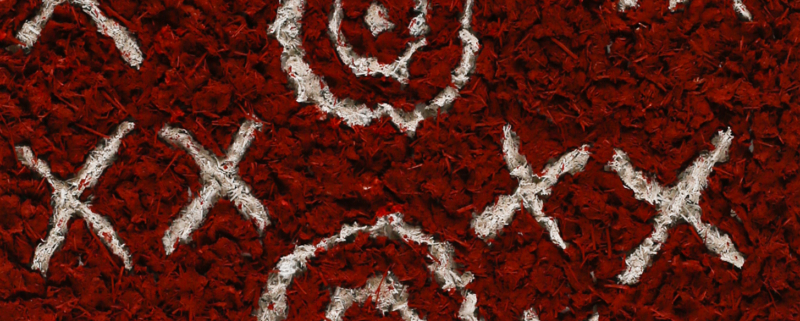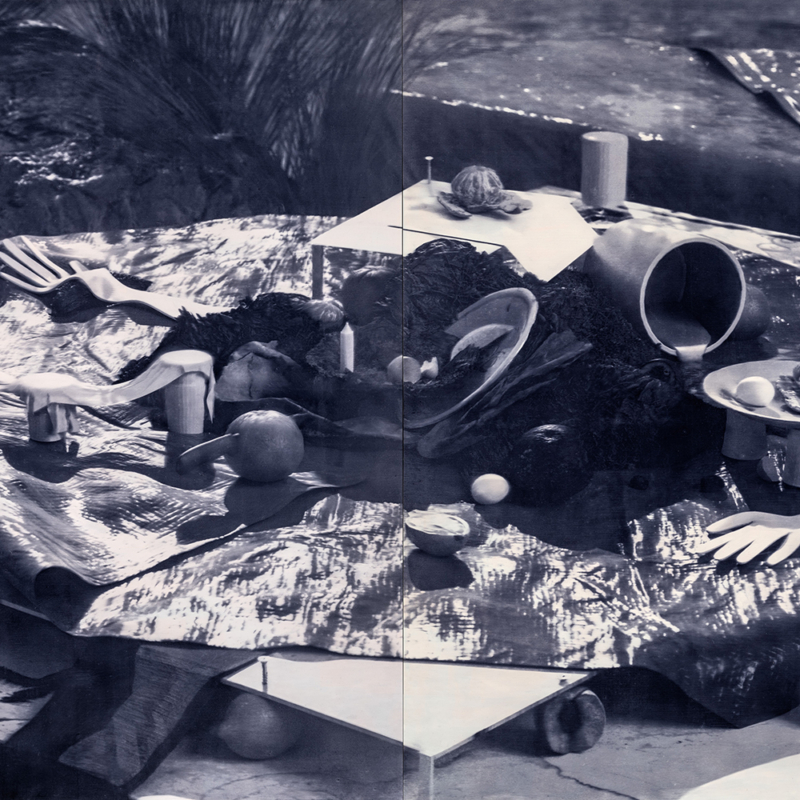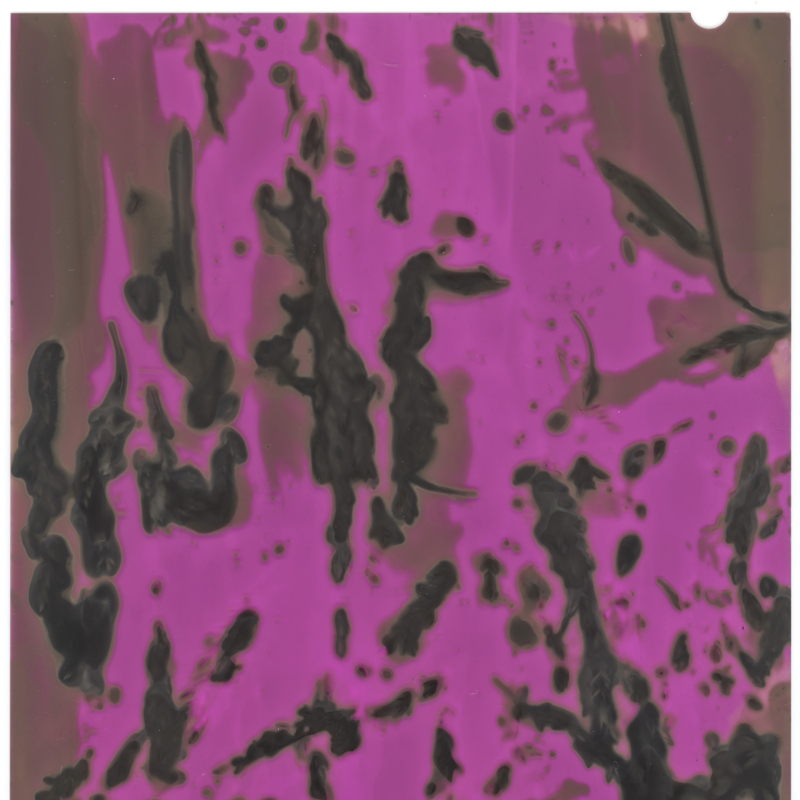
Martin Hagan’s work is born from the ceremonial ground.
Having grown up around senior Anmatyerr men and women in the communities of Laramba and Yuelamu/Rlwem, Martin has developed a genuine passion for the cultural knowledge of his elders. His work conveys a deep commitment to Anmatyerr cultural traditions, particularly ceremonial design and performance, and a desire to see its distinctiveness recognised.
The centrality of ceremony to Martin’s labours is evident in his choice of materials. Each board is comprised of chopped common everlasting daisy , known as anteth anpay-anpay in Anmatyerr: a plant species featuring yellow flowers and grey-green foliage that is regularly used to decorate ceremonial bodies and objects. After being harvested en masse, chopped with an axe and combined with natural pigments, anpay-anpay is transformed into a material that can be affixed to a range of surfaces. Martin’s use of this material, sculpted to render bold ritual iconography, deliberately invites us to imagine the aesthetics of Anmatyerr ceremony.
Growing up with the legacy of his grandfather, the artist Clifford Possum Peltharr/Tjapaltjarri, Martin Hagan is cognisant of Laramba’s artistic history. His practice is inspired by the spirit of innovation that led Possum and other Laramba men – such as Tim Leura and Kaapa Mpetyan/Tjampitjinpa – to develop the desert art movement at Papunya in the early 1970s. Following in their footsteps, Martin draws from the well of ceremonial tradition without being bound by it.
Like the men who came before him, Martin nurtures local religious and cultural knowledges, not only through the continuation of ceremonial Law but with a careful crafting of new intercultural forms of expression and creative inquiry. Just as the early painters travelled the globe to share their art, Martin and the men of Laramba have also recently contributed ground paintings for the Nothing is Too Beautiful for the Gods exhibition, curated by Jean-Hubert Martin at Fondation Opale, Switzerland.
In this exhibition Martin permits us a window into a cherished yet vulnerable ceremonial life. This is deeply personal for Martin. “I get emotional sometimes when I listen to the old people singing. They always say, ‘You mob gotta carry on now.’” This is a generous body of work that conveys one man’s sense of obligation to, and love for, his cultural inheritance.
Opening event: Saturday 24 May, 10:30am




